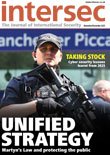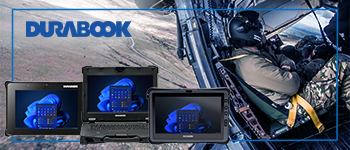Bird’s eye view
Timothy Compston investigates the growing capabilities offered by UAS technology for strategic and tactical border security, and weighs the security threats they pose if misused
Today, unmanned aerial system – or “drone” – technology has developed to the stage where it can provide a powerful force multiplier for military, government, and law enforcement agencies alike, allowing them obtain a bird’s eye view of situations as they develop and to deploy their resources in an intelligent and proactive way. Of course, this positive message has to be set against growing concerns that have hit the headlines over the last 12 months regarding the widespread availability of this technology – which at its most basic can be picked-up for a few hundred dollars – and multiple examples of systems being flown recklessly or, even more worryingly, with malicious intent.
Taking a closer look at some of the events which have cast a shadow over the operation of drones in our skies, and led to calls for tougher regulation, the implications for public order were certainly brought into sharp relief at the Serbia versus Albania football match in Belgrade where a flag was flown into the stadium. This resulted in altercations between players, and fans, which rekindled old animosities. Beyond the football field – and more seriously – the flying of unidentified drones over seven of France’s nuclear plants at the end of October served to raise concerns about the security of such critical infrastructure, even though, thankfully, this time around the drones were said to have been too small to represent any real threat.
More serious still is the concern that non-state actors may attempt to use drones to gain a level of situational awareness on a par with what, previously, was only the preserve of the military, or to employ such drones in terrorist attacks. For its part, the University of Birmingham Policy Commission recently unveiled a research paper into remotely piloted aircraft (RPA) which, among other findings, said there is a need to be vigilant: “The security threat posed by individuals misusing RPA is a serious one, whether for criminal or terrorist purposes.” The worrying spectre of terrorist group-controlled drones taking to the air may already have become a reality as, according to a CNN news report over the summer 2014, ISIS already appears to have demonstrated some sort of drone or unmanned aerial vehicle capability when it posted a video on You Tube showing pictures taken from the sky above a Syrian army base that had been attacked.
So what can be done to keep the misuse of drones in check? One radical solution comes from China, where the authorities are looking to beef-up security on the drone front, with the state-run Xinhua news agency revealing that the China Academy of Engineering Physics has created a laser system able to shoot down the sort of small drones that are readily available in the consumer market. Reports say that, under tests, the system hit more than 30 drones. It is suggested that one potential application may be to provide additional security against drones during large public events, rather than simply relying on snipers or helicopters to bring them down.
Despite some of the negative aspects of an increasing drone or unmanned aerial vehicle footprint, this shouldn’t detract from a discussion of the real operational benefits these systems are able to deliver to the law enforcement community. By any measure, border protection is a difficult task thanks to the vast areas involved; given this reality, it is perhaps not too surprising that the US Customs and Border Protection (CBP) and Office of Air and Marine (OAM) was keen to embrace unmanned aircraft systems as an added weapon in their law enforcement armoury.
The CBP first employed the MQ-9 Predator B, manufactured by General Atomics, in 2005 to support law enforcement operations on the south-west border, and in 2009 on the northern border. Lothar Eckardt, executive director for National Air Security Operations, takes-up the story of the early days: “The general who started the programme came from the air force, and they had great ideas on how to use unmanned aircraft, but we hadn’t gotten to that stage yet, although we knew that we had something good in the making.”
Initially, says Eckardt, there was one aircraft working in a small, restricted area in Arizona. He is frank about the frustrations they experienced in the early days: “It started off a little rough, because even with a nice electro-optical camera it was like looking through a soda straw in a vast desert. It [the Predator] would fly out there when the border patrol had hits on other sensors and investigate and see if it was a cow who tripped the sensor or if it was actually people.” This, he admits, was not an efficient use of the aircraft. A change for the better came when other sensors where married to the aircraft to make it a more capable border security platform. “We added on a radar system called ‘VADER’ which allows you to look at people walking across the desert,” he said. “This gave us the ability to use the aeroplane in a strategic as well as a tactical sense.”
With a radar sensor in place, it was now possible to fly a large portion of the border and point out to patrols on the ground where things were actually happening. “I really want to be able to shift my forces, my agents, to areas where there is high activity,” explained Eckardt. “So, in a strategic sense, this sensor allows the Border Patrol to flex their manpower and make more efficient use of resources.” For such strategic operations, the Predator normally operates at a height of between 19,000 and 21,000 feet, he went on: “We are pretty constant in that kind of envelope. Basically we can cover a couple of hundred miles a night.” On a tactical level, the Predator can be tasked to stay in a busy area and to point out certain people who are coming across to the border patrol. “This means they can interdict the people and any illegal contraband,” explained Eckardt. Once the radar picks-up a group the electro-optical and infra-red sensors swings into action to “validate” that the targets are people. “We try to give the border force as much information as possible so they know who they are going to encounter, [and] do they have backpacks or guns,” he said.
According to Eckardt, his office and the Office of Border Patrol is now looking at requirements for a smaller UAS programme. “Right now the FAA [Federal Aviation Administration] is going through rule-making for small UAS, and they are going to release that some time in 2015,” he said. This, he explained, should highlight what kind of small UAS can operate in national airspace and the training required. “We will probably then bring on a small UAS programme that fits these rules balanced with the border patrol’s own requirements for what they need from a small UAS.”
Dave Kroetsch, CEO at Aeryon Labs, has a strong perspective on the international spread of drones. In fact, his Canada-based company which specialised in the manufacture of small Unmanned Aerial Systems (sUAS) supplies more than 80 per cent of their systems to the export market. Kroetsch believes that border security – maritime and land-based – is a stand-out application for these vertical take-off and landing (VTOL) solutions due to the inhospitability and inaccessibility of the terrain for manned patrols.
Kroetsch is also keen to highlight the need for operators to pick the right scale of technology for the problem they are trying to solve. “If you have something like the US-Mexico border, you are not going to patrol that with a backpack drone like ours or one that you have in the back of your truck,” he said. However, there are smaller applications where a smaller unmanned aerial system makes sense. We see our products [like the Scout or SkyRanger] used in situations where you want to mount a patrol in the border region, but you don’t want people in harm’s way, so using the UAS you can see who is over the ridge, a kilometre away.” He contrasts these smaller systems with the larger drones whose pilots may be far removed from the action: “You have guys on the ground who are often working from data that might be relayed over the radio. It doesn’t really give you the same perspective of having the control in your hand and being the person on the ground who is able to pilot where the UAS goes and to have a real-time view.”
As the number of drones in private hands flies ever higher, many governments are recognising that some sort of regulatory control over where and how drones are operated is needed although, as yet, the approach taken can vary markedly from country to country. For its part, the UAE-based General Civil Aviation Authority is well advanced with a drone licensing law, and the FAA in the US will introduce rules on small unmanned aerial systems later this year (2015).
. According to Richard Taylor of the UK Civil Aviation Authority, distance separation rules are already in place for all drones, whether used recreationally or for any kind of commercial purpose. “The first requirement is to keep the drone at least 50 metres away from any person, structure or vehicle that is not within the control of someone operating the unmanned aircraft,” he said. Another main element, he explained, is the need for unmanned aircraft to remain within line-of-sight at all times.
In the wake of an unidentified drone coming close to an Airbus A320 at London’s Heathrow Airport, Taylor is quick to stress that large unmanned aircraft over 7kg are not allowed to fly in controlled airspace. Taylor goes on to say that it is important to set the dangers posed by small drones into perspective, however. “At UK airports we have only had two incidents [in 2014] against close to three million aircraft movements,” he said. Taylor also suggests that the industry is a step ahead here in terms of providing solutions, pointing to the fact that the Chinese company responsible for the popular Phantom quad-copter has introduced factory-set “geo-fencing” which limits the device from flying in the vicinity of airports.
As a result, Taylor is convinced that the existing regulatory balance is about right. “We [the CAA] think that the current rules are appropriate to the level of risk,” he said. “They allow hobbyists to enjoy their activities and for a robust commercial sector to develop. Our job is to protect members of the public and manned aviation, and that is what the rules do so long as people stick to them.”
There is little doubt that drones are set to become a common feature in all of our lives. The hope has to be that the drone technology available to those tasked with law enforcement can keep one step ahead of criminal and terrorist elements and, crucially, that sufficient steps can be taken to prevent lower budget systems falling into the wrong hands, although this is likely to be problematic over time given the sheer number of suppliers and models now on the market. In the long run technological fixes like geo-fencing may serve to provide some in-built protection against drones being flown through sensitive and safety-critical locations.
Timothy Compston is a freelance journalist and PR professional who specialises in security issues. He studied International Relations and Strategic Studies at Lancaster University, is PR director of Compston PR and a previous chairman of both the National PR Committee and CCTV PR Committee of the British Security Industry Association (BSIA).









